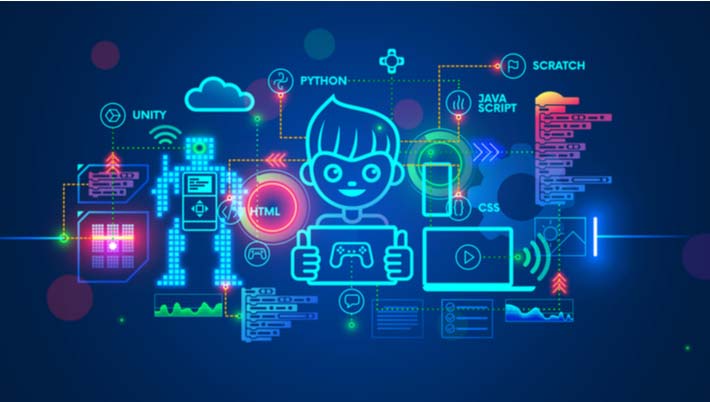Today's article is about gaming and education. As our Grande Vegas no deposit bonus codes and games are not available to those under the age of 18, we are expanding our horizons today to talk about gaming in general and how it's used in educational programs today.
Research shows that using games in educational settings increases participation, motivates students to take risks and fosters social and emotional learning. This is true across the board, regardless of whether the games being played involved online video games, board games or real world games.
All different types of games can be adapted for education but the success of a game in an educational setting is dependent on how it’s used. If the game isn’t engaging and interactive, using it is a waste of time.
So what is the best way to use games for educational purposes?
Gaming in Education
Today many educators are entering the world of gamification as a way to increase student engagement and motivation, enhance visual skills and improve students’ collaboration and interaction with peers. Ultimately, the hope is that students will learn to apply gaming values to real-world situations.
Ideally, games should be used as a support tool to complement traditional methods of instruction. They also impart other skills such as adaptation, following rules, interaction, creativity, problem solving, critical thinking skills, teamwork, good sportsmanship and creativity. Students who are exposed to gaming techniques as part of the learning process discover that learning means more than rote memorization and the acquisition of facts.
By putting the energy and innovation that games bring to the classroom, educators can generate enthusiastic learners while improving their students’ performance.
Strategies for Gamifying Your Classroom
Old School Games
Gamifying your classroom doesn’t have to mean having everyone take out their tablets. You can adapt old school games such as scavenger hunts, dice games, bingo, Scrabble and other traditional games to the 21st century classrooms. Students can learn vocabulary with bingo cards, learn spelling with scrabble or do a scavenger hunt in their homes and then share their findings with their class. You can have students team up and compete as part of a team or as individuals, either in-person or online.
Grading
You don’t have to grade students with a letter or number grade. There are plenty of other ways to give feedback about a student’s performance including, actually, gamifying grading. Throughout a semester you can award points to students based on the goals that they achieve to track progress and encourage perseverance. The final “grade” can be based on the number of points that the student achieves but by awarding points (or badges or another symbol of having met a goal) you will be able to keep your students engaged every step of the way on their way to their final grade as you align levels with skills and highlight the educational process.
Digital Games
The Internet is full of digital games that allow teachers to create activities that teach new concepts and reinforce material already learned. Platforms include Quizlet, Gimkit, Kahoot! And Blooket where teachers can create multiple-choice question-quizzes, puzzles and ciphers that participating players answer on their own devices. The quizzes are archived to teachers can user the material that’s already been created by other teachers.
Other online learning tools include Google docs/spreadsheets/presentations that can be shared among a class for students to add and comment on each other’s work and online worksheets such as Wizer and LiveWorksheets where students do their work by submitting answers to multiple choice and open questions, filling in the blanks, adding images and videos, doing matching exercises, adding a table or graph, etc.
Collaboration
Make your class into an esports team (or divide them up into several esports teams) and get them to collaborate in team-building games like Jeopardy. Collaborative learning facilitates a motivated work culture, helps promoting problem-solving and decision-making skills, fosters meaningful and responsive communication, promotes out-of-the-box thinking, promotes creativity, enhances productivity and keeps students on their feet as they strive to contribute to the group effort.
Some of the best collaborative games for the classroom include Escape Rooms, Barter Puzzle, Balloon Questions, Scavenger Hunts and Scramble Puzzles
Quests
Creating a quest allows students to participate in an adventure quest based on a specific topic or subject. If you’re creating a quest for your students you should think of it as a mission with an objective. The mission can involve project-based learning missions, collaborative projects, activities for students who have finished their work to give them a chance to earn extra badges or points, etc.
Once you have assignments that break down topics into different missions you can create the questline. For instance, if you’re studying about a specific time in history, you can have students take on the role of a newspaper writer who is writing about events of that period. Or if you are studying biology, students can become medical probes and describe what they see in the body.
When you bring games into your classroom you transform the learning environment into a game. It’s not a simple task to gamify the classroom – you need to be creative, sensitive to your students’ needs and abilities and, above all, ready to adapt as necessary. Is it worth it? Yes, study after study shows that learning through play promotes learning and deepens understanding of the subject matter.
Gamifying a classroom can involve using gaming elements within the curriculum, using a game or game-like platform as part or as a whole of the learning process or making the entire learning experience a game. Give it a try!

